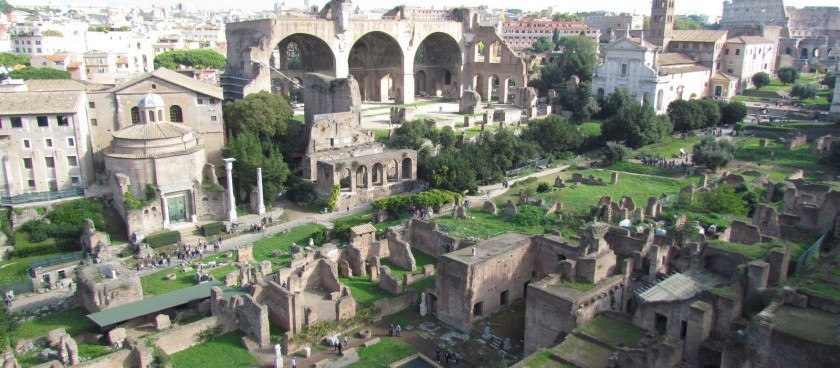- #IT02
- +390639967700
- https://www.il-colosseo.it/en/foro-ro...
- 41.8924940, 12.4853360 Copy to clipboard Copy
-
#History
Continuing seamlessly on the Palatine and the Capitol, along with the area of Colosseum and the Arch of Constantine, is the largest and most important archaeological site in the world.
Originally occupied by marshes, the Forum area was reclaimed by one of the first urban works of ancient Rome: the Cloaca Maxima, a large water drainage system, so in the end there was nothing left but a pond, the lacus Curtius, which it must then be marked by a small monument, because now completely disappeared.
In the Forum are gathering virtually all the major public and sacred buildings of the Roman Republic: by some of the oldest Roman temples such as Saturn or sanctuaries of the Dioscuri at different churches like the Basilica Julia and the Basilica Emilia, the oldest, It founded in the second century. C. and whose remains are now to the right as you enter from the entrance on Via dei Fori Imperiali.
The Curia
Climbing the Via Sacra towards the Capitol, on the right, there is an other building of great importance, the Curia, that was the place of meeting of the Senate, the center of power of the Roman Republic. Right in front of this building there is the Comice, ie the square where the meetings were held before that, until the age of Caesar, It took place in the Campus Martius.
The Comice is delimited, in the direction of the Capitol, from the wonderful Arch of Septimius Severus , built in the early years the third century A.D. to depict the important victories of that emperor against the Parthians, who lived in ancient Persia.
Beyond the Arch of Septimius Severus, almost leaning against the foot of the Capitol, there are the remains of other important buildings, as the Temple of Concord , built by Furio Camillo in 367 BC to celebrate the agreement between patricians and plebeians, the Temple of Vespasian and Temple of Saturn , one of the oldest and most revered temples of Rome, home also of the Aerarium Saturns cash, ie state treasury.
The square of the Forum is a large open space occupied only by a few remains, among which the Column of Phocas, the last monument was erected area, in honor of the Byzantine Emperor Phocas, in 608 A.D. The short side on the side of the Capitol is occupied by the stands of the Rostra, where the speakers spoke to the crowd assembled in the Comitium. The forum takes its name from the fact that it was decorated in 338 BC with beaks, namely spurs, placed on the prows of ships The Romans captured at Anzio.
The tribune of the Rostra is one of the most significant places in the political life of the Roman Republic: here were exposed to the people's heads citizens who were over the lists of those sentenced to death for political reasons including, in 43 BC, also Cicero's head.
On the short side of the square hole is closed by the base of the temple dedicated to Caesar and the crankcase remains of one of the arches dedicated to Augustus. On the long side on the side of the Palatine, however, are the remains of the Basilica Julia. Just behind the Arch of Augustus to the Temple of Vesta and, behind him, the House of the Vestal Virgins, that the priestesses of the temple. Opposed to it is the Temple of Antoninus and Faustina, in front of which stood the Director, one of the oldest buildings around the Roman Forum.
Going back to the Capitol, you meet on the left what is commonly called the Temple of the Divine Romulus and, therefore, the beautiful ruins of the Basilica of Maxentius , building built in the early 4th century A.D. The area of the Forum ends, on the side towards the Colosseum, from the Arch of Titus, built in the time of Domitian to commemorate the victories of Vespasian and Titus over the Jews. Famous is the representation of Tito's triumph, with the legionaries who carry on their shoulders the menorah, the seven-branched candelabrum symbolizing the treasures contained in the Temple of Jerusalem, which was destroyed in A.D. 70, will not be rebuilt.





